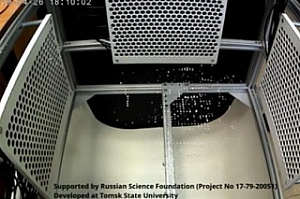TSU radiophysicists are developing the world's first ultrasonic 3D printer: the particles regroup in a controlled field, and three-dimensional objects can be assembled from them. At the moment, scientists have assembled a device for levitating an ordered group of foam particles, now the material can move up and down and left and right.
In addition to ultrasonic 3D printing, this method can be used when working with chemically aggressive solutions, for example, acids or substances heated to high temperatures.
- The first stage of work was controlled levitation of particles. At the moment we can build a plane of particles and move it up and down or right and left, - said TSU Professor Dmitry Sukhanov, the project manager. - When it enters the sound field and during the deposition process, the particles are deposited along specified trajectories in a certain pattern. Using the upper lattice, particles layer by layer will be able to form the desired 3D shape.
Now scientists are working with a crumb of foam plastic, in the future they want to conduct experiments with particles of ABS plastic, which is heavier and therefore, it will be necessary to increase the radiation power.
The device for controlled levitation of particles consists of four gratings that emit acoustic (sound) waves. In a stream of waves (40 kHz), the particles are suspended and can be controlled by a program. The ultrasonic emitter gratings and software were specially created by TSU scientists for this project.
By 2020, scientists must develop ultrasound 3D printing technology and assemble a working prototype printer.

